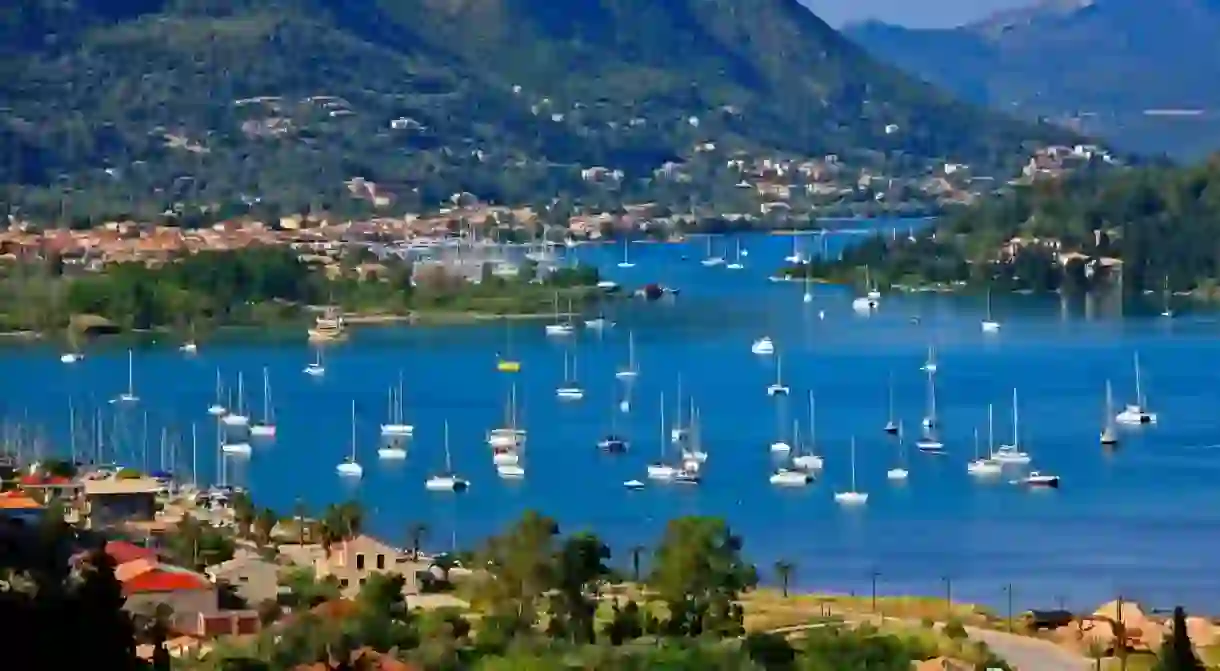A Guide to the Best Sailing in Greece

Though not among the largest countries in Europe, Greece is blessed with the longest coastline of any nation on the continent. Stretching almost 14,000km (8,700mi), equally distributed between its mainland and some 3,000 islands, about 227 of which are inhabited, the country is one of the Mediterranean’s most varied and attractive sailing grounds. The calmer waters of the Saronic and Ionian Seas are best suited to novice sailors, while the North and South Aegean offer more challenging conditions. Here we reveal the best way to explore this picturesque region by boat, from the best mooring locations to where to head for dinner.
Explore all Greece has to offer with Culture Trip’s Sailing Trips.
What to see and do
If you’re a sailing newbie, charter a yacht in the Ionian or Saronic, where low winds make it easier to gain your sea legs.
Venetian, French and British influences evident in its architecture and historical monuments make Corfu a particularly alluring destination to begin your island-hopping cruise. Wander through its Unesco-listed Old Town then trek to the top of the 14th-century Old Fortress for sweeping views of the capital’s neoclassical mansions.
The poster child for the Ionian’s near-surreal, turquoise seas, Zakynthos is home to jaw-dropping Navagio Beach, named after a shipwreck washed up on its golden sands. Check the forecast to avoid choppy conditions and visit early in the morning before the tour boats arrive.
Athens is an excellent jump-off point, not just to ponder the 5th-century BCE Parthenon but also to enjoy comfortable cruising around the Saronic islands, which range from sophisticated Spetses to tiny, pine-clad Agistri.

Best mooring locations
Lefkas Marina (VHF channel 69; tel: +30 26450 26645), situated in Ionian isle Lefkada’s capital, is one of the country’s most modern and best-equipped marinas. It has 620 berths for vessels up to 45m (147ft), along with a hotel, supermarket and shower facilities. From there, head to the unspoilt islets of Meganisi and Kalamos which lie a short hop away.
Similar to the Ionian, the Sporades islands offer lush landscapes and warm, aquamarine waters. Drop anchor at Agios Petros Bay off Kyra Panagia islet, within the National Marine Park of Alonissos, and keep an eye out for Mediterranean monk seals, one of the continent’s most endangered species.

Where to eat and drink
Greeks are proud of their rich culinary heritage which draws on a generous bounty of superior seasonal ingredients sourced from land and sea. Among the seemingly endless choices are wild-caught Aegean sea bream, cheeses from Naxos’ small-scale producers, rare pulses like Santorini’s fava, sun-ripened tomatoes from Crete and fragrant extra virgin olive oil from the Peloponnese.
Every mainland and island region features unique dishes worth sampling, from Sifnos’ clay-baked chickpea soup to Lesbos’ chubby chargrilled sardines. Pair your meal with tsipouro as an alternative to ouzo.
If on Rhodes, dine at vivacious restaurateur Efi Dede’s atmospheric Marco Polo, in the island’s medieval Old Town, and let her do the ordering.
Where to get groceries
Stock up on seasonal produce at farmers’ markets, which are usually in easy reach of most marinas, particularly on the islands. Otherwise, there are plenty of nearby supermarkets, including the odd Lidl, stocking everything you need. Yacht provisioning services, like deli-supermarket Balaskas in southern Athens, facilitate online orders and delivery.
Key annual sailing events
Sailing races in Greece are little known beyond its borders, meaning that they’re very much a local affair. Two of the best-loved week-long events on the calendar are the Cyclades Regatta, held in early July, and Aegean Regatta, held in August, both of which often call in at small, lesser-known islands.

Climate and weather
Greece’s boating season runs from April through October, when the weather is dry and sunny, with occasional showers on either side of Summer. There’s more space at marinas and anchorages in Spring but seas are rather cool for swimming. July and August are peak months in terms of visitors and heat, tempered by Aegean northerlies that can typically reach a force of between 6 and 8. Sailors often opt for the warm seas and steady winds of September and up to mid-October.

How to get there
Greece is well-connected with much of the world via international airports in all major destinations. Athens International Airport is, understandably, the country’s busiest and, where direct flights may not be available, it’s easy enough to fly into the capital and catch a domestic flight or ferry to your final destination.
Did you know – Culture Trip now does bookable, small-group trips? Pick from authentic, immersive Epic Trips, compact and action-packed Mini Trips and sparkling, expansive Sailing Trips.













